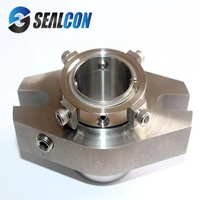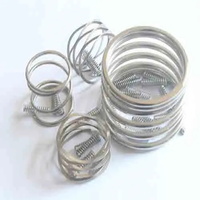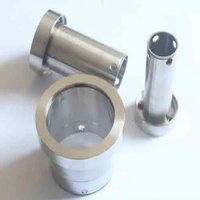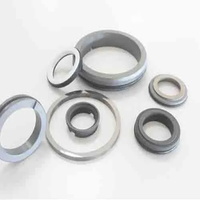Carbon Seal
Quick Detail
- Minimum order:1
Specifications
Mechanical carbon seal has a long history. Graphite is an isoform of element carbon. In 1971, the United States studied the successful flexible graphite sealing material, which solved the leakage
of atomic energy valve. After deep processing, the flexible graphite becomes an excellent sealing material, which are made into various carbon mechanical seal with the effect of sealing components.
These carbon shaft seal are used in chemical, petroleum, electric power industries such as high temperature fluid seal.
Because the flexible graphite is formed by the expansion of expanded graphite after high temperature, the amount of intercalating agent remaining in the flexible graphite is very small, but not
completely, so the existence and composition of the intercalation agent have a great influence on the quality and performance of the product.
Selection of Carbon Seal Material
The original inventor used concentrated sulfuric acid as oxidant and intercalating agent. However, after being applied to the seal of a metal component, a small amount of sulfur remaining in the
flexible graphite was found to corrode the contact metal after long term use. In view of this point, some domestic scholars have tried to improve it, such as Song Kemin who choosed acetic acid and
organic acid instead of sulfuric acid. acid, slow in nitric acid, and lower the temperature to room temperature, made from a mixture of nitric acid and acetic acid. By using the mixture of nitric
acid and acetic acid as the inserting agent, the sulfur free expanded graphite was prepared with potassium permanganate as oxidant, and acetic acid was slowly added to nitric acid. The temperature
is reduced to room temperature, and the mixture of nitric acid and acetic acid is made. Then the natural flake graphite and potassium permanganate are added to this mixture. Under constant
stirring, the temperature is 30 C. After reaction 40min, the water is washed to neutral and dried at 50~60 C, and the expanded graphite is made after high temperature expansion. This method
achieves no vulcanization under the condition that the product can reach a certain volume of expansion, so as to achieve a relatively stable nature of the sealing material.
Specification of Carbon Ring Seal
Sealcon can produce different carbon ring seals according to different customers’ requirement.
model M190T M106K M180K M106D M160C M160B
material pure graphite furan resin furan resin antimony carbon copper alloy Babbitt alloy
density (g/cm3) 1.8 1.65 1.8 2.3 2.4 2.4
Fractural strength 100 65 80 65 80 65
(MPa)
compressive strength (MPa) 250 230 240 200 250 160
Shaw hardness 92 90 90 80 75 60
porosity (%) 1.2 1.5 1.2 2 2.5 8
Coefficient of heat 5.5 5.5 5.5 5.5 6 5.5
expansion (1/℃)
temperature (℃) 600 210 210 350 350 200
medium concentration% pure graphite furan resin antimony copper alloy Babbitt alloy
hydrochloric acid 36 + 0 - - -
sulfuric acid 50 + 0 - - -
sulfuric acid 98 + + - - -
nitric acid 50 + 0 - - -
nitric acid strong - - - -
hydrofluoric acid 40 + 0 - - -
phosphoric acid 85 + + - - -
chromic acid 10 + 0 - - -
acetic acid 36 + 0 - - -
sodium hydroxide 50 + + - - +
potassium hydroxide 50 + 0 - - +
sea water + + + + +
benzene 100 + 0 + + -
ammonia 10 + + + + -
acetone 100 + + + 0 +
carbamide + + + 0 -
carbon tetrachloride + + + + +
oil + + + + +
gasoline + + + + +
+ stable - unstable 0 middle (between stable and unstable)
Hangzhou Sealcon Fluid Machinery Co., Ltd is a professional carbon seal ring manufacturer, we provide china agitator, high quality mechanical seal and etc. For more information, please feel free to
contact us!





